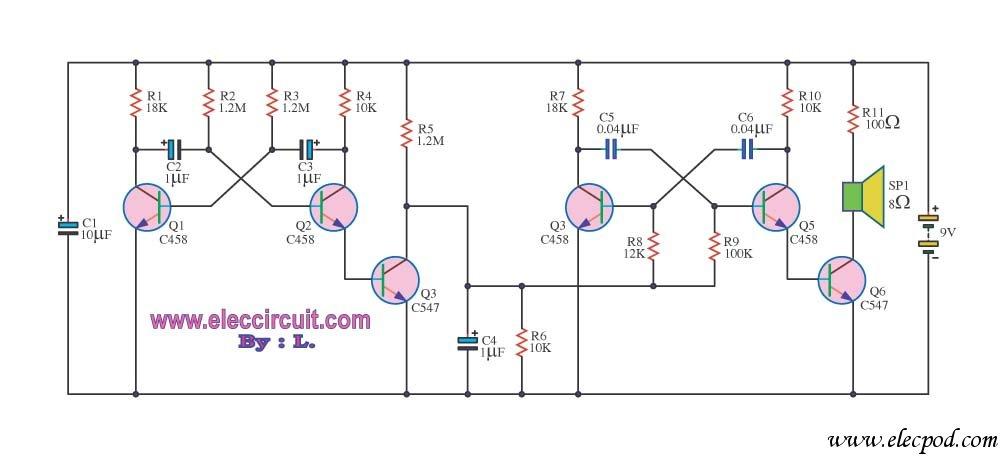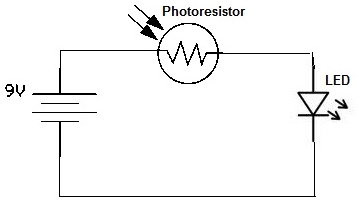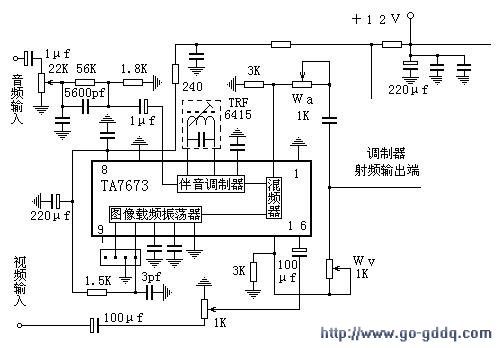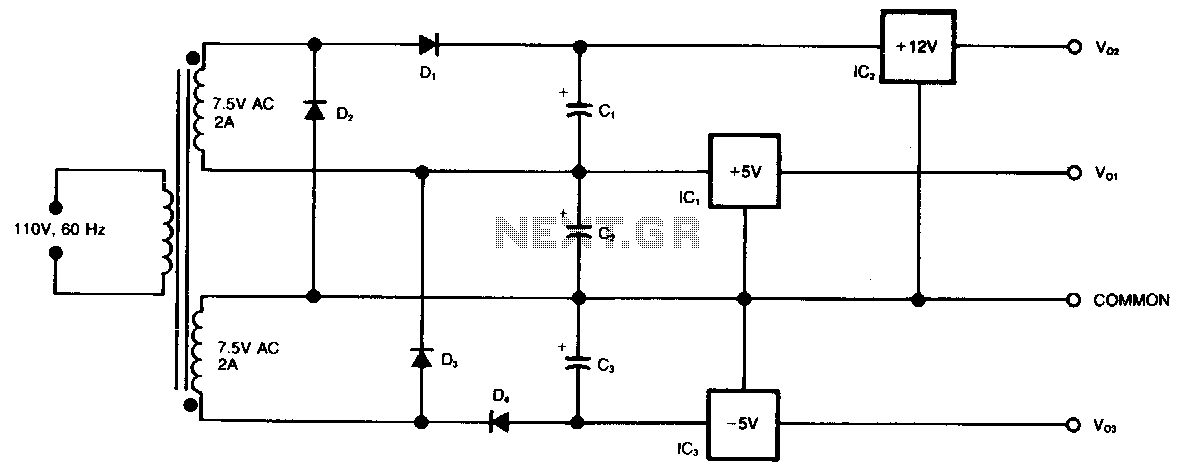
3 W Stereo amplifier using MAX 7910-Audio power amplifier circuit
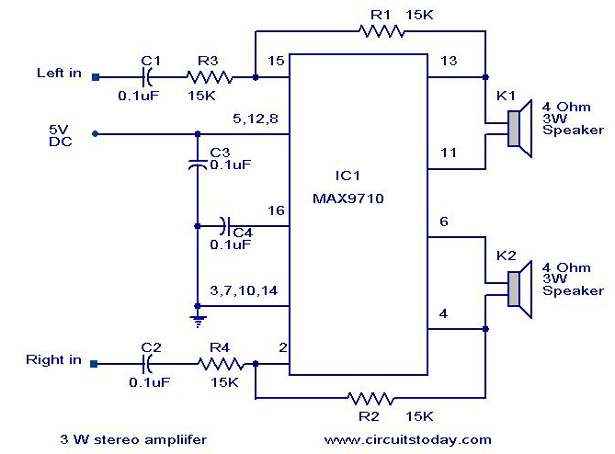
An audio power amplifier circuit for a 3-watt stereo amplifier using the MAX 7910 IC is explained below.
The audio power amplifier circuit utilizing the MAX 7910 IC is designed to deliver a maximum output power of 3 watts per channel in a stereo configuration. The MAX 7910 is a dual power amplifier IC that is optimized for audio applications, providing high efficiency and low distortion, making it suitable for various audio amplification needs.
The circuit typically consists of the MAX 7910 IC, passive components such as resistors and capacitors, and additional circuitry to handle input and output signals. The input audio signal is fed into the amplifier through a coupling capacitor, which blocks any DC component and allows only the AC audio signal to pass. The gain of the amplifier can be adjusted by selecting appropriate feedback resistors, ensuring that the output level matches the requirements of the connected speakers.
The power supply for the circuit should provide a regulated voltage typically between 5V to 15V, depending on the specific application and desired output characteristics. Bypass capacitors are recommended near the power supply pins of the IC to filter out any noise and ensure stable operation.
The output stage of the MAX 7910 is designed to drive low-impedance loads, making it ideal for connecting directly to speakers. A heat sink may be required to dissipate heat generated during operation, especially at higher output levels.
Overall, the design of this audio power amplifier circuit is aimed at achieving a compact, efficient, and high-quality audio amplification solution suitable for various consumer electronics applications.An audio power amplifier circuit for 3 watts stereo amplifier using max 7910 IC is explained below.. 🔗 External reference
The audio power amplifier circuit utilizing the MAX 7910 IC is designed to deliver a maximum output power of 3 watts per channel in a stereo configuration. The MAX 7910 is a dual power amplifier IC that is optimized for audio applications, providing high efficiency and low distortion, making it suitable for various audio amplification needs.
The circuit typically consists of the MAX 7910 IC, passive components such as resistors and capacitors, and additional circuitry to handle input and output signals. The input audio signal is fed into the amplifier through a coupling capacitor, which blocks any DC component and allows only the AC audio signal to pass. The gain of the amplifier can be adjusted by selecting appropriate feedback resistors, ensuring that the output level matches the requirements of the connected speakers.
The power supply for the circuit should provide a regulated voltage typically between 5V to 15V, depending on the specific application and desired output characteristics. Bypass capacitors are recommended near the power supply pins of the IC to filter out any noise and ensure stable operation.
The output stage of the MAX 7910 is designed to drive low-impedance loads, making it ideal for connecting directly to speakers. A heat sink may be required to dissipate heat generated during operation, especially at higher output levels.
Overall, the design of this audio power amplifier circuit is aimed at achieving a compact, efficient, and high-quality audio amplification solution suitable for various consumer electronics applications.An audio power amplifier circuit for 3 watts stereo amplifier using max 7910 IC is explained below.. 🔗 External reference
Warning: include(partials/cookie-banner.php): Failed to open stream: Permission denied in /var/www/html/nextgr/view-circuit.php on line 713
Warning: include(): Failed opening 'partials/cookie-banner.php' for inclusion (include_path='.:/usr/share/php') in /var/www/html/nextgr/view-circuit.php on line 713
